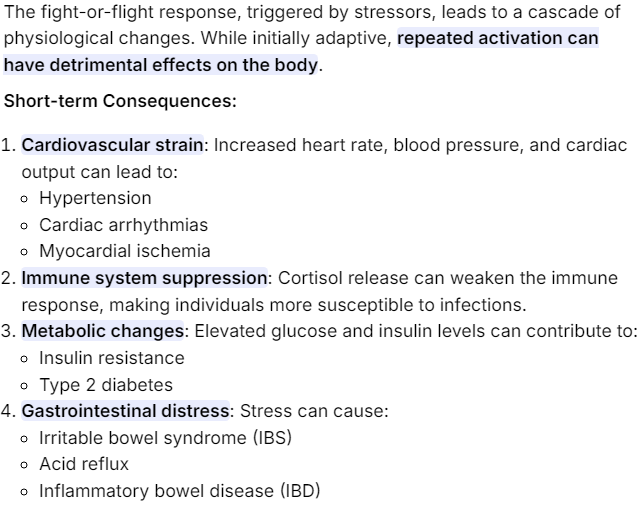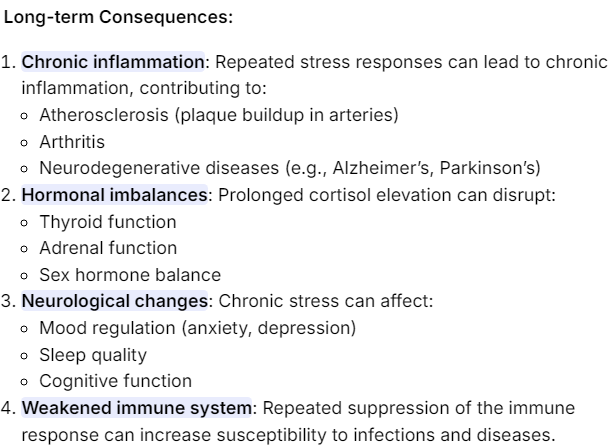Today we return (yet again) to T-Nation and another advertisement article by the supplement-shill Chris Shugart where he tries to sell you a solution for “clean energy,” as in stimulants.
Let’s see what he has to say this time.
“The word “energy” is used a lot in the stimulant world, but it means different things. In the category of pre-workouts, there’s everything from lightly caffeinated drinks to gray-area powders containing banned substances. I’ve played around with a lot of them, but I quickly learned that only certain types of energy are productive.”
Yes, many of us can relate. I used to pop “stackers” (ephedrine/caffeine) as candy pills in the late 90’s and early 2000’s to keep up with my 12-hour work days, not understanding that it was my diet and all the toxic supplements that made me tired in the first place — but we’ll get to that later.
Now, not one single one of these stimulants gives you “energy.” You only get energy from macronutrients, preferable fat, and from your natural production of glucose via gluconeogenesis, and from ketones produced by the liver. That is actual energy, as in metabolic compounds that the cells can utilize to perform their actions.

In the “stimulant world,” all these substances work by affecting the brain’s reward and stress systems. They alter the normal functioning of neurotransmitters, particularly dopamine, which plays a crucial role in motivation, pleasure, and reward processing. And, as all chemical compounds are very toxic and cause damage, they also trigger a stress response in the body, mimicking the “fight-or-flight” reaction — which in turn increases glucose release and energy mobilization, increases heart rate, blood pressure, respiratory rate, and rises alertness and vigilance as the body perceives a threat. All these factors contribute to helping you evade danger and to survive a dangerous situation (as in being attacked or hunted by a predator.) It might feel like you get a lot of extra “energy,” with heightened “alertness,” and you feel more “focused,” but in short it is a stress response, an artificially triggered survival mechanism through ingesting toxic chemicals/drugs, and it is extremely taxing and damaging to the body.

Just imagine the damage caused by those conned into taking one or several daily cups of coffee or tea — or worse, those popping caffeine pills or gulping down energy drinks throughout the day. That accumulated damage will build up quickly, and it will especially wreck your cardiovascular system and your heart.



“Broadly, there are two types:
- Dirty Energy. Your central nervous system is definitely jacked up but also frazzled. There’s no euphoric feeling; it’s more of an ugly, coarse energy. In a work setting, this energy type is stressy: unfocused, and unproductive. At the gym, dirty energy can lead to unwise PR attempts. And the crash isn’t pleasant.
- Clean Energy. This type of energy is smooth and focused. You don’t just feel energized, you feel good: euphoric, positive, and happy. Mood is up, stress is down. It’s a feeling of upbeat clarity. In a workout, concentration is through the roof and the feeling of fatigue is delayed. In a work setting, ideas flow.”
All stimulants would fall into the “dirty energy” category. Actually, the only thing that can be seen as “clean energy” is nutrient-dense foods that are appropriate for our species, as in animal-based foods, as in animal fat and animal protein. Anything artificial, as in a supplement, will be toxic to some degree and also unnatural, altering the balance of the body and that of the nutrients we get from food.
“I prefer “happy flow” to powder-induced ADHD myself. But what supplement does science say provides that effect? Easy: N-Acetyl-L-tyrosine or NALT”
So do I, and you will have all the “happy flow” energy you’ll ever need if your diet is on point, as in removing all the toxic and damaging crap, especially the toxic carbohydrates that f**k-up your energy system — and instead, simply follow our natural human species-specific, species-appropriate carnivorous diet.
What’s NALT?
“N-Acetyl-L-tyrosine is a more bioavailable form of the amino acid L-tyrosine, which is used by the brain to make dopamine. NALT is a precursor to L-tyrosine, which is a precursor to several neurotransmitters. L-tyrosine is hydroxylated to L-DOPA, then L-DOPA is then decarboxylated to produce dopamine. Dopamine is further converted to norepinephrine (noradrenaline) and epinephrine (adrenaline).”
And let me stop you right there. An unnatural amount of L-tyrosine without food synergy could indeed increase dopamine and thus epinephrine (adrenaline) above normal levels — but only if the body needs it (this is crucial, and we’ll get to it in a bit.)
And what is epinephrine? Yes, it is a hormone produced by the adrenal glands in response to stress as it plays a crucial role in the body’s “fight-or-flight” response to danger. In other words, we’re back to square one, that of a harmful stress response.

With that said, as we’re discussing pure L-tyrosine, there is no real “stimulant,” as in a toxic substance that triggers the brain’s reward and stress systems, and there are likely very little toxic compounds present that causes severe cell damage and an increased stress response.
This means that the noticeable “effect” comes from the additional L-tyrosine being converted into hormones, as in restoring catecholamine levels (dopamine, norepinephrine, and epinephrine) in the brain — and this will only help and be noticeable under stressful or challenging conditions.

So, we can conclude that having “optimal” levels of L-tyrosine can be good if you often feel stressed, as it is needed to manufacture the hormones to cope with stress. That also means that if you are stressed, likely by a shitty diet, extra L-tyrosine will help with manufacturing the stress hormones, keeping you going. And that also means that if you’re healthy and your stress load is low, extra L-tyrosine will likely not do anything as your body and your brain will only use what is currently needed.

In other words, you will only get a noticeable effect from L-tyrosine if your body is already under a lot of stress from a high toxic load, as in you consuming a shitty and toxic diet full of carbohydrates and other plant-based garbage and chemicals. Unfortunately, that is about 99% of the current population. And instead of fixing the problem that makes them tired, as in the diet, they reach for quick fixes, such as stimulants or L-tyrosine.
What Does NALT Do?
“Here’s what it does on the mental side:
- Boosts cognitive function: focus, memory, mental clarity.
- Boosts motivation (via enhanced neurotransmitter production).
- Improves mood and reduces stress or the negative effects of stress on mental acuity.
- Enhances cognitive flexibility and reduces subjective fatigue levels during prolonged “thinky” tasks.
- Improves the ability to multitask.
Here’s what it does on the physical performance side:
- Reduces the perception of fatigue during training.
- Improves the stress response during intense physical exercise.
- Boosts endurance (by 15% in some studies) and overall performance in high-intensity workouts.
- Improves focus during exercise, important for technique and establishing a mind-muscle connection.
- Noticeably improves time to exhaustion during high-intensity exercise.”
To be real, L-tyrosine in itself does none of those things, as it is only a precursor for the synthesis of hormones such as triiodothyronine (T3) and thyroxine (T4,) epinephrine (adrenaline,) norepinephrine (noradrenaline,) and dopamine. It is these hormones, at optimal natural levels, or even above natural levels, that does these things.
And while some extra L-tyrosine might temporarily increase these hormones, keep in mind that the amino acids tryptophan, histidine, and arginine are also needed for the synthesis of various neurotransmitters. If you lack these, the effect will not be as pronounced.
Also, phenylalanine serves as the initial precursor to epinephrine, and tyrosine can be formed from phenylalanine. Both are needed for the biosynthetic pathway of epinephrine.
How Much NALT Does the Trick?
“Studies typically use between 300 and 2000 milligrams. For most performance benefits, 300 is too low, and with 2000 you’re more at risk of side effects (typically mild GI upset and headaches.) A solid, noticeable effect is achieved with 1500 mg.”
Before we continue, let’s repeat the most important fact — that every single person who consume a non-human diet that contains carbohydrates, seed/vegetable oil, any kind of plant-food such as vegetables, fruits, grains, seeds, nuts, etcetera, are already extremely unhealthy and under a heavy toxic load, as in a very stressed body. That means that additional L-tyrosine will help to keep up the production of these stress hormones that are constantly being triggered and depleted. So, in that regard, L-tyrosine will simply amplify the ongoing stress response, hence the effects that can be perceived as positive and advantageous.
However, while you might temporarily perform better, the big problem remains, that of stress and a toxic load that does continuous damage to your body. Taking an amino-acid to help the body cope and temporarily perform better is not the solution. The only thing you have achieved is to temporarily feel a little better on your highway to an early grave.
And another thing to consider is the manufacturing process of L-tyrosine and NALT, and all the toxic residues. And is it really 100% identical to L-tyrosine found in cells, as in animal-based foods? Likely not. So, is it really something you want to consume?
L-tyrosine is made either from fermenting glucose by using bacteria or yeast, or by using phenylalanine to react with a reducing agent, such as sodium borohydride, to produce L-tyrosine. The resulting solution is then extracted using a solvent, such as ethanol or acetone, to isolate and concentrate the L-tyrosine. The resulting L-Tyrosine solution or powder is then purified through various methods, including, ion exchange chromatography, reverse-phase high-performance liquid chromatography (HPLC,) recrystallization, and activated carbon filtration. The purified L-Tyrosine is then milled or ground into a fine powder to increase its surface area and facilitate dissolution. Depending on the desired formulation, the L-tyrosine powder may be blended with other ingredients, such as bovine gelatin (capsule material,) stearic acid (lubricant,) fillers (e.g., lactose, magnesium stearate,) and silicon dioxide (anti-caking agent.)
To make N-Acetyl-L-tyrosine (NALT,) the bonding occurs through an acetylation reaction. The reaction is catalyzed by enzymes called acetyltransferases, specifically arylalkylamine N-acetyltransferase (AA-NAT) or tyrosine N-acetyltransferase. These enzymes facilitate the condensation of acetyl-CoA (an acetyl group linked to coenzyme A) with L-tyrosine, resulting in the formation of N-Acetyl-L-tyrosine.
It is worth noting that these bonds that produce NALT do not occur naturally in nature, and we do not know what happens in the body as it breaks down to L-tyrosine. All we know is that NALT is more water-soluble than L-tyrosine, and therefore, at least in theory, may lead to faster and more efficient absorption into the bloodstream.

So, again, even if NALT or L-tyrosine as a supplement would not impose a toxic load from contaminants, why would you waste more money only to cope better with your shitty lifestyle? A lifestyle that is speeding you towards a multitude of “modern diseases” and an early grave?
Why not simply fix your body and regain that energy and love for life that you had as a kid — before all the sugars and toxins began to take their toll?
If you really want to feel good and have limitless energy, all you need to do is to adopt our natural human diet of animal-based foods, preferably going full carnivore, or at least, following an animal-based ketogenic diet. Once your body is fat adapted and you run on a fat metabolism, your toxic load will be minimal and you will have unlimited energy. You will be able to handle stress without difficulty, as you will get all the nutrients your body needs.
And guess what, 100 grams (3.5 oz) of red meat provides between 1000 and 2100 mg of L-tyrosine depending on the cut, with an average of 1265 milligrams per 100g. And if you add some eggs, you’ll get at least 500 mg of L-tyrosine per 100 g. In other words, five large eggs will give you close to 1500 mg.


As you can see, you will get plenty of all the amino acids from consuming our natural diet, and you’ll also get complete food synergy and 100% bioavailability. No need for supplements, ever!
If you need help with your health, nutrition, and/or transitioning from your current way of eating to our natural species-appropriate, species-specific way of eating, I’m available for both coaching and consultation.
And if you found the article and my insights helpful and enjoy my free information, please consider donating to help pay the webhosting bills and keep the site running. And if you’re interested in discussing and sharing information with likeminded people, consider joining our uncensored community at Ungovernable.se. Thank you!


